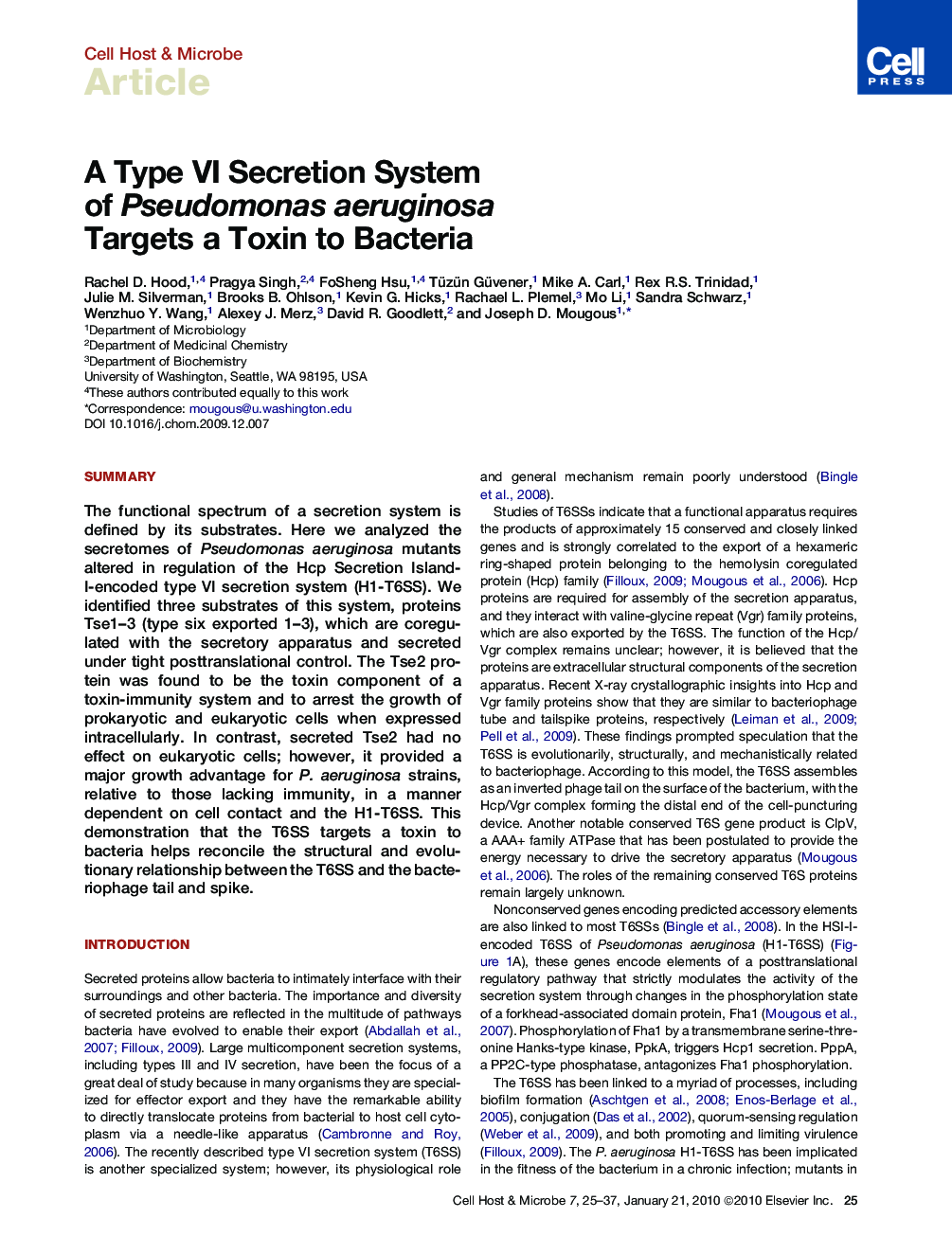| Article ID | Journal | Published Year | Pages | File Type |
|---|---|---|---|---|
| 4361467 | Cell Host & Microbe | 2010 | 13 Pages |
SummaryThe functional spectrum of a secretion system is defined by its substrates. Here we analyzed the secretomes of Pseudomonas aeruginosa mutants altered in regulation of the Hcp Secretion Island-I-encoded type VI secretion system (H1-T6SS). We identified three substrates of this system, proteins Tse1–3 (type six exported 1–3), which are coregulated with the secretory apparatus and secreted under tight posttranslational control. The Tse2 protein was found to be the toxin component of a toxin-immunity system and to arrest the growth of prokaryotic and eukaryotic cells when expressed intracellularly. In contrast, secreted Tse2 had no effect on eukaryotic cells; however, it provided a major growth advantage for P. aeruginosa strains, relative to those lacking immunity, in a manner dependent on cell contact and the H1-T6SS. This demonstration that the T6SS targets a toxin to bacteria helps reconcile the structural and evolutionary relationship between the T6SS and the bacteriophage tail and spike.
Graphical AbstractFigure optionsDownload full-size imageDownload high-quality image (158 K)Download as PowerPoint slideHighlights► The HSI-I-encoded T6SS of P. aeruginosa secretes three proteins, Tse1–3 ► Tse2 is a toxin capable of acting on prokaryotic and eukaryotic cells ► Tsi2 is an essential gene that provides immunity to Tse2 ► The HSI-I-encoded T6SS targets Tse2 to bacterial, not eukaryotic, cells
